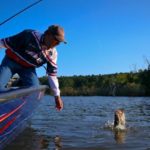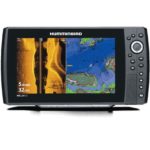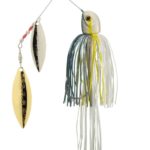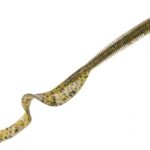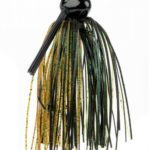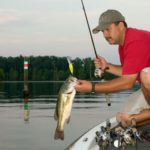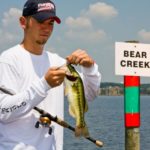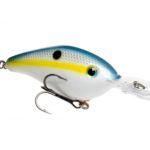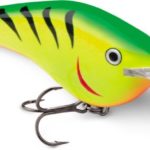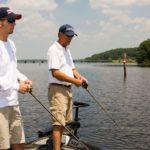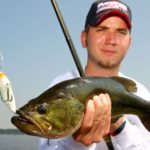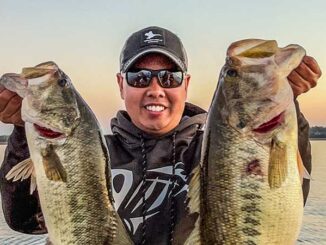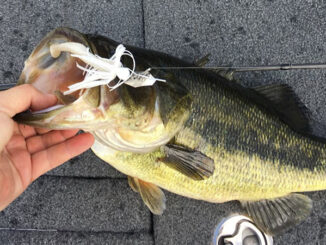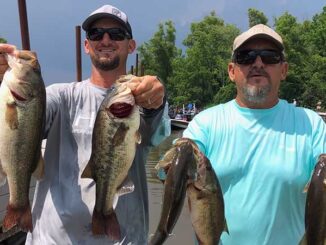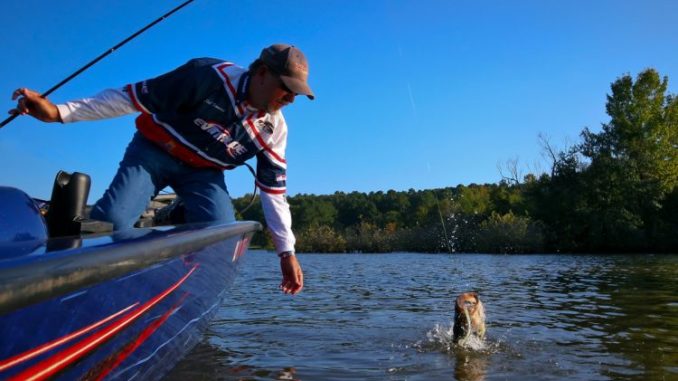
Although channel bends can be difficult to locate, doing so can pay huge dividends.
More than 10 years ago, when I used to live in West Monroe, my local tournament partner Sid Havard and I used to look forward to May every year.
Like most other bass anglers, we relished the spring spawn when bass were up shallow and easy to catch, but it was their annual migration offshore that really got us going.
Our argument was that when they were up spawning in shallow water anybody could catch them.
Once they moved offshore, it took somebody with the skills and precision of a surgeon to stay on the bite.
Not that they were hard to catch — quite the contrary. Channel bass are some of the easiest bass to catch once they get locked onto their summer holes. However, the problem isn’t catching them — finding them is.
With miles and miles of channels running lake bottoms all across Louisiana, it was sometimes like searching for the proverbial needle in a haystack.
“It’s not like that at all anymore,” Havard told me recently as we caught up on the last few years. “The old-school ways of finding good channel holes haven’t disappeared, but with all the electronics on boats these days there are no more secrets. It’s just knowing where to stop.”
When we first started learning how to fish channel holes on Lake D’Arbonne several years ago, we primarily focused on outside channel bends.
That was a good start, and we soon learned that some outside bends were better than others. But, just because it was an outside bend didn’t necessarily mean anything. The best bends had some kind of cover on them like stumps from long-gone trees that had grown toward the old creek bed.
We sweetened those outside bends that weren’t as productive by sinking brushpiles and creating man-made rock piles that we hoped would attract and hold bass.
Once the calendar turned to May, Havard and I would spend all day dredging big crankbaits, crawling jigs, and dragging Carolina rigs across every inch of every Lake D’Arbonne channel hole we knew about.
That was more than 10 years ago, and although Havard said I wouldn’t have any problem finding our old holes today, he said there were so many more that we never even knew about that are just as good if not better than those we used to frequent.
“It still all starts in May and only gets better after that,” he said. “After you left, I got tired of people whacking me on holes I didn’t know about so I learned how to use these new electronics and lake maps to my advantage. It was an uphill struggle because all these young guys can read their depth finders like they’re playing a video game and go right to the fish.”
Havard said for a long time he was still idling around looking at the direction the trees leaned and the presence of blue herons and diving birds to put him close to the fish.
“But I learned that I can go down a channel with my Side Imaging on and that thing doesn’t leave any doubt as to what’s down there,” he went on. “Those things are amazing. My son Chance and I were graphing Lake Claiborne a while back and we went over a spare tire. His side imaging not only drew the spare tire, but it also drew the lug holes in the rim. These things show you everything nowadays.”
Technology hasn’t only improved our ability to see below the water, it has also improved our ability to stay on fish once we find them on a channel.
“I don’t even think I have one of those orange buoys in my boat anymore,” Havard said. “My trolling motor has that spot lock on it that keeps it in the exact same spot once I push a button. That means I can hook up, push a button, put the fish in the livewell, get back up on the deck and make the exact same cast I just made to catch that fish.”
Advanced imaging technology has also allowed Havard to increase the number of productive channel holes he fishes on Lake D’Arbonne. Rather than fish only the outside bends, he has spent lots of time graphing straight stretches of channel that otherwise might not have gotten his attention.
“The holes along the straight stretches probably don’t get as much pressure as the outside bends because they’re less obvious,” Havard said. “One of the things I look for along the straight stretches is drains where sloughs and secondary creeks dump in to the main channel. I can think of two between Highway 33 and Highway 2 that are super good. If you can get on a drain you’re right where you need to be.”
As much as technology has helped him find new channel holes to fish, Havard went on to say that as good as his new electronics are, he still relies on some old-school tricks to finding good channel holes.
“What I try to look for — even on D’arbonne — is birds,” he said. “They’ll tell you where the fish are — any kind of birds. Whenever you see them you can bet the shad are there and the bass aren’t very far away. Even if they leave when you stop, it doesn’t matter. You can see them from 1,000 yards away when they start that diving. Crank up and get to them as quick as you can.”
Havard also pays close attention to blue herons because his dad always told him that herons make their living finding fish — they’re not just out there for fun. When he sees them sitting on the side of a channel, he knows it’s a tell-tale sign that bait and bass are present.
“You can also look at standing timber,” Havard went on. “Trees that grow beside a creek have a tendency to lean toward the water. As long as that timber is still standing above the water once a lake is impounded, you can still see the direction it’s leaning. All the limbs will be kind of curled over toward the creek, too.”
Leaning trees can not only help you find a channel, but they can also help you define it as long as they’re still standing on both sides of the old submerged creek. You’ll see the timber on both sides leaning in toward the creek.
“Imagine what that used to look like before the lake was flooded,” Havard advised. “If you can kind of picture it in your mind you’ll have a lot easier time of figuring out how a creek twists and turns under water.”
As for fishing channel holes, what’s the old saying about the more things change the more they stay the same? Sure there are probably some new closely guarded secrets on how to fish channel holes, but the tried and true techniques that have always worked on channels still work on channels — maybe with just a few tweaks.
“I know we used to whack them on a Norman DD22 on D’Arbonne,” Havard said. “I think with the increased pressure on channel holes nowadays, you’ve got to take what you know and make subtle changes. Like the crankbait — the DD22 is a big bait that gets deep.
“Well what if you could fish a smaller bait that gets just as deep? That’s why I started using some of the smaller-bodied Lucky Craft crankbaits that can still get down there deep. The body is the size of a Bandit, but it has a bigger lip on it.”
When fishing crankbaits on channel holes, Havard says he seems to have a lot better luck by fishing it fast and in the most violent way possible. And rather than try to avoid the stumps and brushpiles so he doesn’t lose an expensive crankbait, he goes out of his way to try to crash his baits directly into the wood cover.
“Fishing a crankbait like this all day long will wear you out,” Havard added. “That’s why I like the wide-spool Lew’s reels with a low gear ratio. I can make super long casts with it, and it’s so much easier to pull those deep diving crankbaits all day long.”
Another tweak to an old favorite is using a lighter weight on a Carolina rig. Havard, who is definitely not a fan of a Carolina rig, has recently forced himself to slow down by using ½-ounce weights rather than the typical ¾- and 1-ounce lead.
“The lighter weight has forced me to slow down and really focus on what’s going on down there,” he said. “And if my rig gets to the drop-off without a bite, it has a slower, more natural fall down the ledge.”
Some other great baits for channel holes are Texas rigged 10-inch worms and football head jigs. Slow rolling heavy spinnerbaits can also be effective.
As for colors, Havard says the best ones tend to change every year. For example, last summer they ate a firetiger colored crankbait really well. The summer before he had success on the sexy shad colors.
“This year it might be something totally different,” he added. “In my mind the bream might have little different color variations each year. And I believe that’s what these bass are eating on the channel — bream. People may say they’re eating shad and crawfish, but what do you see in your livewell after you put a big fish in it? Bream half the size of your hand — that’s what.
Channel fishing during the summer is all about perfect timing. Bass spend a lot of time suspended out in the middle of the channel where they are very difficult to catch and only move up onto the channel ledges when it is time for them to eat.
“It could be anywhere from an early morning to a late evening bite,” Havard said. “Last summer on D’Arbonne, I would put my boat in at daylight and do really well the first couple hours then hit a lull and would struggle a while. It’s really all about taking advantage of the window of opportunity channel holes give you. Are you there when it’s happening or not?”
The good news is once you figure out the timing, you can just about bet the bite will be close to the same time every day. Barring any unforeseen dramatic weather or water changes, you can put together a little milk run of your most productive spots based on the time you expect bass to be feeding.
“You need to be there when it’s showtime,” Havard insisted. “There are people up here who have the timing figured out almost to the minute. They know the exact time they need to be there, and they just run their holes all day long and stay on the bite.”
Havard believes there is no doubt that the best lake in all of north Louisiana for channel fishing is Lake D’Arbonne. With its two main arms, Corney Creek and Little D’Arbonne, coming together just above the Highway 33 bridge to form the main channel that runs the rest of the way to the dam, it offers just about everything a channel fisherman could dream of.
“And the channel on D’Arbonne is so well marked that it is easy to at least know you’re in the right spot,” Havard said. “Lake Claiborne has some good channel holes in it too, but they are much harder to find because those creeks aren’t marked as well. And even when you do find the channel, it twists and turns so much it’s hard to stay on it.”
But a lake like Claiborne is where fishing the channel can pay off big time. Since so many anglers avoid it because it is so difficult to find and fish, it’s a perfect place to catch some good fish as long as you’re willing to put in the work to find the hot spots.
Caney Lake has channel holes too, but Havard admits that they are even smaller and harder to find than those on Claiborne.
“Every one of those creeks has a submerged channel, but it might be as wide as your boat,” Havard concluded. “I know a man down there that catches a lot of big fish doing that, but he lives on the lake and spends just about every day either fishing it or graphing it.”
As long as a lake was created by damming up a creek, you can bet it will have channel holes.
Taking the time to find the spots on the channel that concentrate bass will pay off for you all summer long once you figure out the best time to be there and the best baits to throw.
